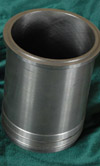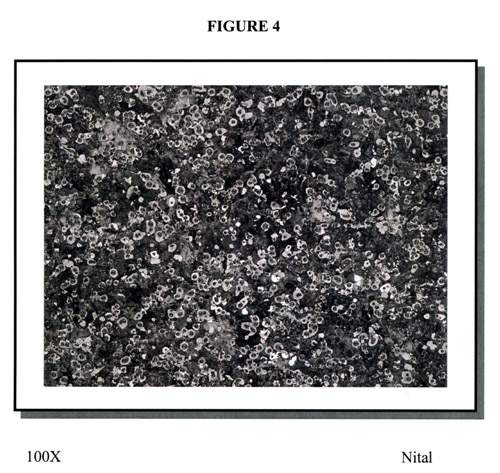Kalitta insight
 Kalitta Racing has been around for 50 years in NHRA Top Fuel racing. As with every team in this category it uses a Hemi-patterned, 500 cid, 90-degree V8 engine with forged aluminium block (solid; with no water passages). The sleeves (cylinder liners) are made of centrifugal cast ductile iron of special formulation (ASTM 536-84) and are ‘slip fit’ into the aluminium block with 100 percent cylindrical contact.Each sleeve is held at the top by a flange and has a stainless steel wire ring in a groove on the top of the flange that, in turn, penetrates a solid cooper gasket for block/head sealing.
Kalitta Racing has been around for 50 years in NHRA Top Fuel racing. As with every team in this category it uses a Hemi-patterned, 500 cid, 90-degree V8 engine with forged aluminium block (solid; with no water passages). The sleeves (cylinder liners) are made of centrifugal cast ductile iron of special formulation (ASTM 536-84) and are ‘slip fit’ into the aluminium block with 100 percent cylindrical contact.Each sleeve is held at the top by a flange and has a stainless steel wire ring in a groove on the top of the flange that, in turn, penetrates a solid cooper gasket for block/head sealing.
There is no bore coating involved in this application and, at peak horsepower the cylinder pressure is around 25,000 psi. One of the biggest challenges keeping a 7-8000 horsepower nitro engine together in NHRA Top Fuel and Funny Car racing is stopping distortion from taking the sleeves out of round. Distortion requires added work by the crews to prepare an engine for its next run.Crew chief Jim Oberhofer of Kalitta Racing acknowledges his teams have been using the same type of sleeve for the last few years but they are currently testing different materials to gain time between races to work on other critical items. Oberhofer is looking for added efficiency in the work programme and added life to the engine sleeve, a component “we all pretty much take for granted.”Oberhofer said of his current tests: “We expect this new sleeve to help us with distortion. We generate so much heat it takes the sleeve out of round pretty easily. We have to pull the sleeve, put it in a vise and round it out back to size…”Oberhofer said sleeves can last anywhere from one run (“sometimes we just trash them”) to as many as 20-25 passes down the 1000-foot dragstrip; “Nothing is ever the same in this business.” He is hoping new material in the current test sleeve “lasts longer and cuts my hone times in half.”For the most part, Oberhofer’s crews will use a sleeve 12 times, take it out and hone it, then place it in the block again. “With this new material, we hope to keep the sleeve rounder for a longer period of time. This would save us time and money. We have the equipment to hone but prefer not to do that all the time.”

Darton International is supplying the test sleeve. Sleeve development is normally carried out with about 10 teams in the pair of nitro categories, according to Dave Clinton of Darton International (which supplies about 90 percent of the classes). The new cast iron material is an evolutionary piece from an earlier development, he told me. It is significantly harder and more dense than the sleeve material Oberhofer currently runs in his Top Fuel and Funny Car machines. The typical sleeve density for NHRA nitro-class use is 170-190 nodules per square millimeter. Darton’s TFX sleeves made of DDI 2007 are “very, very dense at 400 nodules per square millimeter; this new sleeve is 500 nodules/square millimeter,” Clinton said.It’s always a trial to keep the sleeve round; “We would prefer not to have to hone all the time and hope the new sleeve will last twice as long and give better life to the engine. That longer life will be better for everything on the engine,” Oberhofer said.